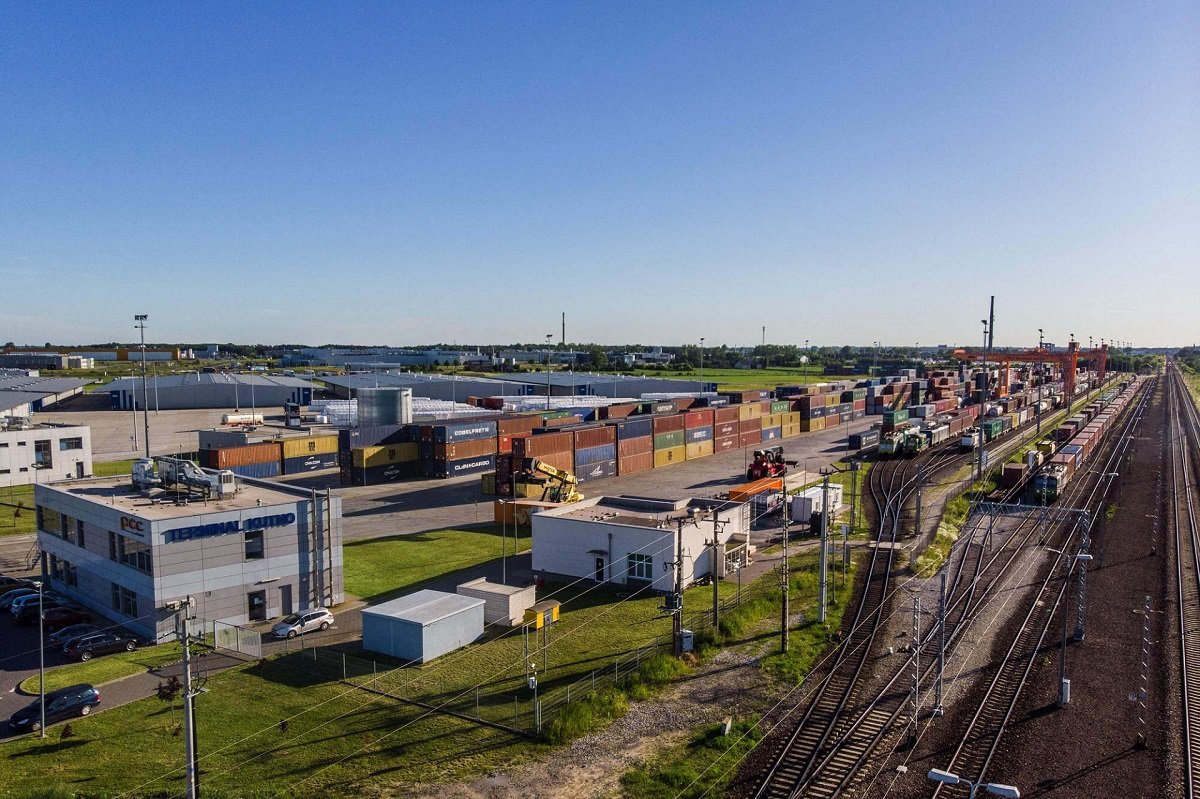The standard for long-distance transport - especially international and intercontinental transport - is to strive to reduce the costs of logistics services by optimising the supply chain. The solution that helps TSL companies adapt their service offer to the needs of modern business is intermodal transport, using different modes of transport, especially railroads. The combination of the two branches optimises the supply chain in terms of time and is an effective alternative to long-distance car transport. Intermodal has many advantages; however, it requires appropriate infrastructure and thoughtful organization. Below we discuss the most important benefits of combined transport and the main challenges faced by companies offering such services.

Infrastructure for intermodal transport
The development of combined transport depends to a large extent on the available infrastructure. It should be understood in a multidimensional way, by, among others:
- road network,
- railway infrastructure for intermodal trains,
- the number and capacity of the transhipment terminals,
- the frequency of sea and inland waterway connections, and the facilities necessary for carrying out transhipment and transport by this route.
The organisation of intermodal transport is a complex undertaking that requires transport planners to make maximum use of available means and channels of communication. Without adequate infrastructure it becomes practically impossible to plan a transit route using, for example, a car, train, and ship. No wonder that the largest companies in the TSL sector are investing in the development of facilities for organising intermodal transport in such a way as to generate as many benefits as possible and at the same time to maximise the use of their rolling stock.
Key benefits of mixed transport
What other advantages – apart from the supply chain optimisation mentioned above – does combined transport have? One of the key benefits is reduced environmental pollution, by reducing CO2 emissions and planning transport so that the road section is as short as possible. By adapting individual transport models to the needs of the supply chain, the advantages of each method translate into benefits, thus making transport sustainable, and its advantages make it one of the most flexible and market-oriented. The key to success is a dense network of daily, regular rail connections, from which only a short distance separates the container from the place of receipt of goods. Experienced forwarders are able to plan the transport route in such a way as to fully utilize the potential of each branch of transport.

Intermodal transport of goods – key challenges
In addition to an impressive list of advantages, combined transport is an industry which, like no other, faces many challenges. This is largely due to the involvement of different modes of transport in the implementation of a single transport service and, at the same time, the lack of one element, a reference unit within the Ministerial structures, which would be dedicated to this extremely dynamically growing discipline. It must be made clear that intermodal transport is neither road nor rail transport, it is both road and rail transport, which makes a significant difference in its characteristics and functioning. In addition to the need for proper synchronization of individual transports, an important factor that determines the quality of supply chain operations is to ensure the security of goods during their transhipment at the port or terminal and along the entire transport route. The containers, secured with HSS seals, are an excellent transport unit, which allows for a safe and reliable service, largely guaranteeing load safety. Modern, fenced, monitored, functioning 24/7 terminals complete this picture, and together with the monitoring and location systems for platforms, railway warehouses and cars, they provide a high guarantee of delivery reliability not only on time, but securely, without any damage to the goods. And again, in the part about barriers we have advantages ? but even though the industry is trying to turn every barrier into an asset there is still a lot to do. The unified transport documentation and the recognition by the market/loaders and recipients CMR as a document which does not reflect the transport route and the unified intermodal list is valuable in this case; the legislator supporting this initiative and education on the market in the field of the specificity of intermodal transport; a comprehensive land use plan to support the development of intermodal terminals and distribution and consolidation centres, which will enable efficient service of the currently developed and currently neglected transport regions of the country.
To sum up, the main challenges for the combined transport sector are:
- Representation of industry in legislative structures
- a coherent, long-term policy for the sustainable development of the industry, based on a well-established knowledge and understanding of the specificities of intermodal transport
- wise and tightened up, investments in logistics and distribution facilities, including the most important transport corridors
- intermodal letter recognized as a document functioning officially at all levels of interest not only for operators, but also for carriers, shippers, and recipients…
- supporting initiatives to improve the efficiency of supply chain organisation and accessibility of regions
Summary
Although intermodal transport provides companies with many tangible benefits, organising such operations requires knowledge, experience, and appropriate infrastructure. Since the beginning of its activity (15 years) in the TSL industry, PCC Intermodal SA has focused on the development of the intermodal sector, which results in the current possibility of organizing combined transport in all strategic directions in Poland, Europe, and the world. Years of experience and thousands of completed transport operations have allowed us to develop the position of the national leader in the intermodal transport market, emphasizing the highest quality of services.
- Europejska Komisja Gospodarcza, Eurostat, Międzynarodowe Forum Transportu: Ilustrowany słownik statystyk transportu. s. 166
- https://pitd.org.pl/news/transport-intermodalny-uzupelnieniem-czy-konkurencja-dla-drogowego/
- Lewandowski, Krzysztof (2014). "Czechoslovak activity to prepare European norms for containers before the Second World War" (PDF). Acta Logistica. 1 (4): 1–7
- Railway Gazette International August 2009, p. 17